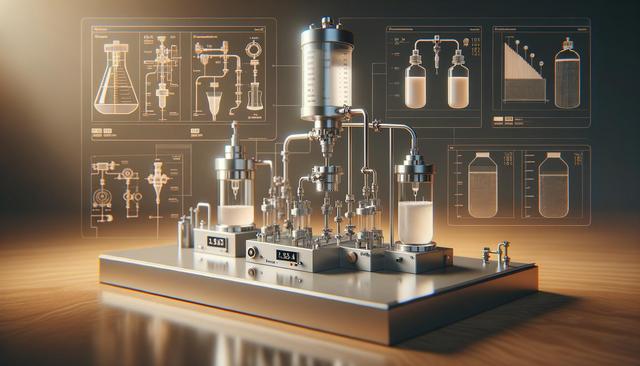Understanding the Role of Chemical Dosing Systems
Chemical dosing systems are integral to numerous industrial processes, offering controlled and measured delivery of chemicals into fluid streams. These systems are commonly used in water treatment, food and beverage production, pharmaceutical manufacturing, and chemical processing industries. Their primary function is to ensure that the right amount of chemical is introduced at the right time, which helps maintain process efficiency, product quality, and compliance with regulatory standards. Without accurate dosing, operations may face issues such as chemical imbalances, equipment damage, or safety hazards.
Precision is especially critical in environments where chemical reactions influence the final outcome of a product or service. For example, in water treatment facilities, improper dosing can lead to under-treated or over-treated water, impacting both environmental safety and public health. By automating the dosing process, these systems minimize human error and provide consistent, repeatable results that support optimal process control.
Components and Configuration of Dosing Systems
A typical chemical dosing system includes several key components that work together to ensure precise chemical delivery. These components include:
- Dosing pumps – responsible for injecting the chemical into the process line
- Storage tanks – where chemicals are stored before being dosed
- Control panels – used to program and monitor the dosing rates
- Flow meters and sensors – to measure and regulate chemical flow and concentration
The configuration of a dosing system depends on the specific application, the type of chemical being used, and the required dosing accuracy. Systems may be designed for batch dosing, where chemicals are added in measured quantities at intervals, or for continuous dosing, which maintains a constant supply of chemicals over time. The choice between manual and automated systems also depends on the operational needs and the level of control required.
Benefits of Accurate Chemical Dispensing
Accurate chemical dispensing contributes significantly to operational efficiency and safety. Some of the main benefits include:
- Reduction in chemical waste, leading to cost savings
- Consistent product quality, particularly in sensitive manufacturing processes
- Improved worker safety by minimizing direct handling of hazardous substances
- Compliance with environmental and industry regulations
With precise dosing, facilities can avoid the risks associated with overuse or underuse of chemicals. This includes mitigating potential damage to equipment or infrastructure and avoiding penalties from regulatory bodies. Moreover, accurate dosing supports sustainability efforts by reducing chemical consumption and minimizing environmental discharge.
Applications Across Industries
Chemical dosing systems are versatile and can be adapted for a wide range of industrial applications. In the wastewater treatment industry, they are used to control pH levels, disinfect water, and remove contaminants. In agriculture, dosing systems help apply fertilizers and pesticides in controlled amounts, reducing environmental runoff and improving crop yields. Food and beverage manufacturers rely on these systems to add preservatives, flavorings, and sanitizers, ensuring product consistency and safety.
Another significant area where chemical dosing plays a role is in the oil and gas sector. Here, dosing systems help prevent corrosion, manage scaling, and control microbial growth within pipelines and processing equipment. In each of these industries, the ability to tailor dosing systems to specific process demands makes them a valuable tool for enhancing productivity and ensuring operational control.
Choosing and Maintaining a Dosing System
Selecting the right chemical dosing system involves evaluating several factors, including the type of chemicals used, dosing frequency, required flow rates, and integration with existing process controls. It’s important to work with experienced professionals who can assess your operation and recommend a system that meets both performance and safety standards. Ongoing maintenance is also critical for ensuring long-term reliability.
Routine checks should include:
- Inspecting dosing pumps and replacing worn parts
- Calibrating sensors and flow meters
- Cleansing tanks and pipelines to prevent buildup or contamination
- Updating software and monitoring systems as needed
By establishing a maintenance schedule and training staff on proper system use, businesses can extend the life of their equipment and reduce downtime due to malfunctions or errors. A well-maintained chemical dosing system is a strategic asset that contributes to consistent performance and regulatory compliance.
Conclusion
For industries that depend on precise chemical management, chemical dosing systems offer an effective solution for maintaining control, efficiency, and safety. These systems support a wide range of applications and can be tailored to meet specific operational needs. By investing in accurate dosing technology and prioritizing regular maintenance, companies can enhance their process control, reduce waste, and achieve greater reliability in their production environments.




Leave a Reply